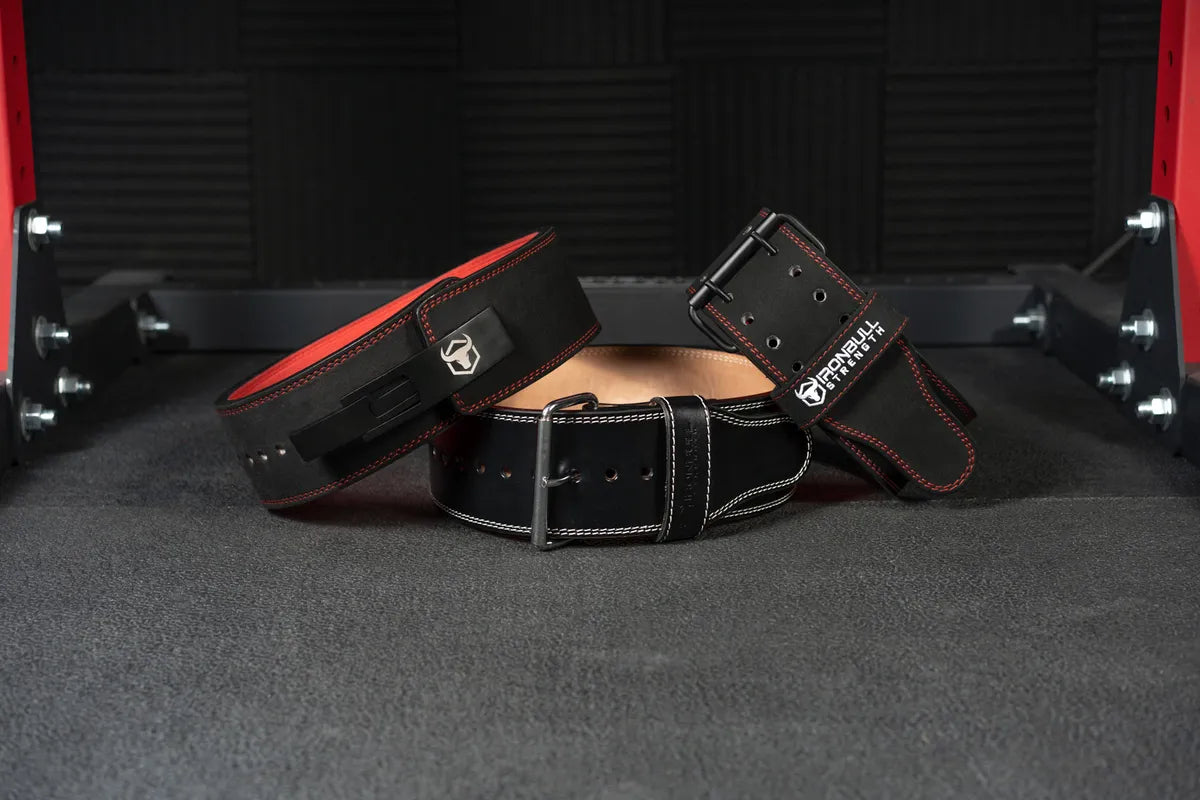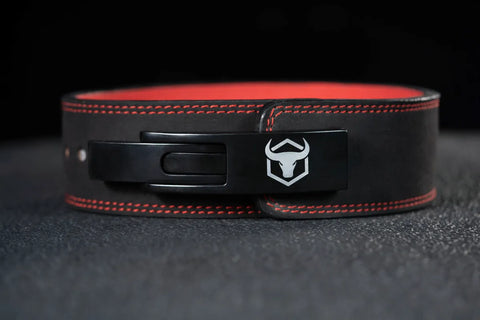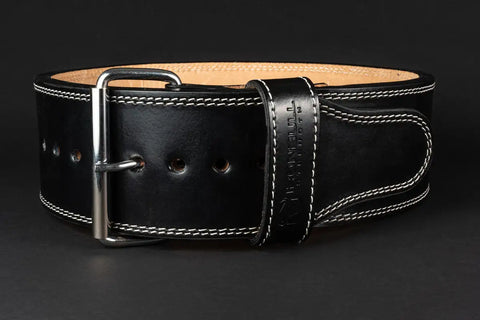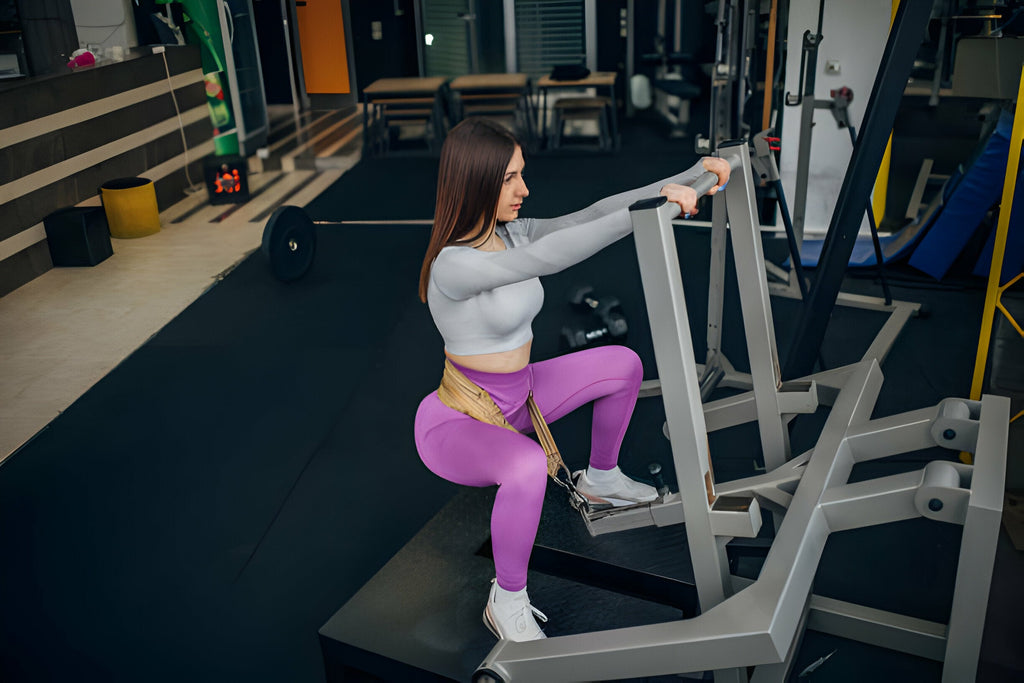Lever Belt vs. Prong Belt: Which One Is Better?

In the world of weightlifting, the choice of equipment can be as crucial as the exercise routine itself. Among these essential gear pieces, the lifting belt stands out, offering crucial support and stability during heavy lifts. However, not all belts are created equal, and the debate between lever and prong belts has long been a topic of discussion among lifters.
Both types have their unique characteristics, advantages, and drawbacks, making the decision far from straightforward. Lever belts are known for their convenience and quick release mechanism, offering a consistent fit with each use. Whereas prong belts, with their traditional buckle system, provide a level of adjustability and customization that many lifters find invaluable.
Learning the differences is key to maximizing performance, safety, and comfort in your lifting journey. This article delves into the nuanced world of lever versus prong belts, providing a comprehensive comparison to help you make an informed choice. Whether you're a seasoned powerlifter or a fitness enthusiast embarking on a strength training journey, selecting the right lifting belt is a decision that can significantly impact your lifting experience. Let's explore the ins and outs of these two popular belt types, helping you to lift smarter, safer, and more effectively.
Key Differences Between Lever and Prong Belts
Understanding the mechanical differences and material quality between lever and prong belts is crucial. These variations not only affect the belt's functionality but also its durability and comfort during training sessions.
Mechanical Variations
The primary distinction between lever and prong belts lies in their closure systems. Lever belts feature a lever buckle mechanism, which allows the user to clamp the belt tightly with a simple flip of the lever. This system provides a quick, secure fit that remains consistent throughout the workout. The ease of fastening and unfastening a lever belt is particularly advantageous during workouts involving varying degrees of exertion or when transitioning between different exercises. However, the fixed setting of the lever means that any significant change in waist size, such as natural fluctuation or wearing different thicknesses of clothing, requires adjusting the lever's position using a screwdriver.
On the other hand, prong belts utilize a more traditional buckle system, akin to a regular belt. They can have a single or double prong design. The advantage of a prong belt is its flexibility in adjustability. Lifters can easily tighten or loosen the belt by a notch for a perfect fit, accommodating changes in waist size or clothing without needing any tools. This adjustability makes prong belts more versatile, although fastening and unfastening them can be more time-consuming compared to lever belts.
Material and Build Quality
Both lever and prong belts are commonly made from leather or synthetic materials like nylon. Leather belts, often the go-to choice for serious lifters, offer exceptional durability and support. They tend to be stiff and robust, providing a high level of stability for heavy lifting. Nylon belts are more flexible and lighter, making them a comfortable option for dynamic movements or for those who prefer less rigidity.
The thickness and width of the belt also play a significant role in its effectiveness. Typically, powerlifting belts are thicker and wider to offer maximum support, while belts designed for general fitness may be thinner and more flexible to allow a greater range of motion. Regardless of the type, the quality of stitching, buckle, and overall craftsmanship determine the longevity and performance of the belt.
Analyzing Tightness and Comfort
Once set to the preferred tightness, a lever belt maintains the same degree of compression every time it's fastened. This consistency is a significant benefit, as it allows lifters to rely on a uniform level of support and bracing across different sessions. The lever mechanism enables lifters to secure the belt tightly around their waist with minimal effort, a feature particularly appreciated during heavy lifts where every second counts. However, the flip side of this convenience is the limited flexibility for on-the-fly adjustments. To change the tightness of a lever belt, one usually needs a screwdriver to alter the lever's position, making it less ideal for lifters whose waist size fluctuates or those who prefer varying tightness levels during a workout.
Prong belts excel in adjustability and fit. The traditional buckle system allows for quick and easy adjustments, making it ideal for accommodating changes in clothing, body size, or preference for tightness during different exercises. The ability to fine-tune the fit to exact needs at any moment adds a layer of versatility to prong belts. While they may require more effort to fasten compared to lever belts, the level of customizability they offer can be invaluable for lifters seeking a more tailored fit. This adaptability makes prong belts a popular choice among a wide range of athletes, from bodybuilders to functional fitness enthusiasts.
[Related: How Tight Should Your Weightlifting Belt Be? The Ultimate Guide for Every Lifter]
Ease of Use and Practicality in the Gym
The ease of adjusting your lifting belt can significantly impact your workout flow and efficiency. Lever belts are renowned for their quick adjustment mechanism. The lever closure allows lifters to lock in and release the belt swiftly, providing a hassle-free experience, especially when transitioning between different exercises or when preparing for a heavy lift. This feature is particularly beneficial in scenarios where time is of the essence, such as during timed workouts or competitions. The ability to quickly secure the belt at a consistent tightness level without fiddling with buckles or holes adds to the appeal of lever belts among lifters who prioritize convenience and speed.
Prong belts, on the other hand, shine in their flexibility and adaptability. The traditional buckle system, similar to that of a regular belt, offers a high degree of adjustability. Lifters can easily tighten or loosen their prong belt by a notch to achieve the perfect fit, accommodating fluctuations in waist size or different layers of gym attire. This adjustability is especially advantageous for those who prefer a more personalized fit or for lifters whose tightness preferences vary throughout their workout. The prong belt's ability to fine-tune tightness on the fly makes it a versatile and adaptable option, suitable for a wide range of exercises and lifting styles.
Evaluating Performance and Versatility
Choosing the right belt for various training styles hinges on understanding the unique demands of each lifting scenario. For powerlifters who engage in heavy, compound lifts like squats and deadlifts, the lever belt is often the go-to choice. Its ability to provide a consistent, secure fit quickly is crucial for lifters handling maximal loads. The lever belt's sturdy design offers the rigid support needed for such intense lifts, making it a staple in powerlifting circles.
Prong belt's versatility makes it a favorite among a broader spectrum of athletes, including bodybuilders, cross-trainers, and general fitness enthusiasts. The adjustable nature of the prong belt caters well to workouts that involve a variety of exercises or fluctuating intensity levels. It’s especially suitable for sessions that combine heavy lifting with more dynamic movements, as the ease of adjustability allows for quick fit modifications. Bodybuilders, who often focus on a mix of heavy and hypertrophy-focused lifts, may find the prong belt's flexible adjustability aligns better with their varied routines.
Durability and Longevity Considerations
Ultimately, the choice between a lever and prong belt should reflect the specific needs of the lifter's training style. While the lever belt excels in offering solid support for heavy, static lifts, the prong belt’s adaptability is advantageous for diverse and dynamic workout regimes.
Lever and prong belts, each with distinctive features, offer varying degrees of durability and life expectancy, key considerations for lifters investing in their equipment. Lever belts, known for their robustness, are typically crafted from thick, high-quality leather or resilient synthetic materials. The centerpiece of these belts – the lever mechanism – is made from sturdy metals designed to withstand significant force. While lever belts are built for durability, the mechanical nature of the lever can be a vulnerability over time, especially if not maintained properly or subjected to extreme loads regularly.
Prong belts, on the other hand, owe their longevity to their simplicity. The classic buckle and prong design, free from complex mechanical parts, face less risk of functional failure. The material, often similar to that of lever belts, ensures that the belt can endure the rigors of regular, intense use. However, the belt holes, which undergo constant stress, may show signs of wear over time. This wear and tear can be mitigated with proper care and occasional maintenance, such as adding new holes or reinforcing existing ones.
Both lever and prong belts can have a long lifespan when chosen from reputable brands and cared for appropriately. Regular cleaning, careful usage, and proper storage are crucial for maintaining their condition. Lever belts may require more attention to the mechanical parts, while prong belts benefit from periodic check-ups of the buckle and holes. With these considerations, either type of belt can be a durable, long-term investment for a lifter's training journey.
Comparison and Value for Money
The cost of equipment often reflects its quality and longevity. When comparing lever and prong belts, a noticeable difference in price points emerges, typically influenced by the complexity of design and materials used. Lever belts, with their intricate mechanical buckle systems, generally sit at a higher price range. The cost not only accounts for the advanced lever mechanism but also for the durability and strength of the materials, usually high-grade leather or strong synthetics. This investment is often justified by the belt's longevity and the consistent support it provides, making it a popular choice among serious lifters and professionals.
Prong belts, employing a simpler buckle design, are usually more affordable. Despite their lower price, they don't necessarily compromise on quality. They offer great value, especially for those who prefer the flexibility of adjustable tightness or are newer to weightlifting. While the initial investment is lower, the longevity and adaptability of prong belts make them an economical choice for a wide range of lifters, ensuring that users get significant value for the money spent.
Popularity and User Preferences
Lever belts have seen a surge in popularity, particularly among powerlifters and those engaged in heavy, static lifts. Their quick and easy fastening mechanism, offering consistent tightness and support, appeals to athletes focused on maximizing performance in competitions and training. The reliability and time-saving aspect of lever belts make them a favored choice in scenarios where adjusting tightness between lifts isn't practical.
Prong belts maintain a strong following, especially among traditionalists and those who value versatility. Their adjustability makes them a preferred option for bodybuilders and general fitness enthusiasts who require varying degrees of tightness during a workout session. The prong belt’s simplicity and durability, coupled with its ability to cater to a broad range of exercises, keep it relevant and widely used.
While lever belts are trending in the realm of competitive lifting, prong belts continue to be esteemed for their adaptability across different lifting styles. The choice often comes down to personal preference and specific training requirements.

Lever Belts: Advantages and Drawbacks
Quick Fastening and Release: Lever belts are celebrated for their ease of use. The lever mechanism allows for swift fastening and release, a significant advantage during workouts that require changing belt tightness between lifts.
Consistent Fit: Once adjusted to the right size, lever belts offer a consistent level of tightness every time they are used. This consistency is beneficial for lifters who prefer a uniform feel during their lifting sessions.
Solid Support: Typically made from sturdy materials, lever belts provide robust support, especially beneficial during heavy lifting.
Drawbacks:
Adjustment Inconvenience: Adjusting a lever belt’s size requires a screwdriver and can be time-consuming, making it less suitable for lifters whose waist size fluctuates or those who share belts.
Potential for Mechanism Failure: The lever, being a mechanical component, is susceptible to wear and tear, and may eventually require replacement.
Recommendations for Lever Belts
Lever belts are best suited for serious lifters, particularly powerlifters and those engaged in heavy lifting routines who appreciate the quick fastening feature and consistent support.

Prong Belts: Advantages and Drawbacks
Adjustability: Prong belts offer superior adjustability. The traditional buckle system allows for easy tightening or loosening, making them versatile for various stages of a workout or for lifters with fluctuating waist sizes.
Simplicity and Durability: With fewer mechanical components than lever belts, prong belts generally have a longer lifespan and less risk of failure.
Customizable Fit: They provide a more personalized fit, which can be adjusted on the fly, catering to individual comfort and support needs.
Drawbacks:
Time-Consuming Adjustments: Adjusting a prong belt can be more labor-intensive and slower than a lever belt, potentially interrupting the flow of a workout.
Wear and Tear on Holes: Regular use can lead to wear and tear on the holes, though this is generally a long-term concern.
Recommendations for Prong Belts
Prong belts are ideal for a wide range of lifters, from beginners to bodybuilders and those engaging in workouts that require frequent adjustments in belt tightness. Their simplicity and flexibility make them a versatile choice for various training styles.
FAQs
Q: What type of belt is best for powerlifting?
A: For powerlifting, a lever belt is often preferred due to its ability to provide consistent, strong support and quick fastening, crucial for heavy lifts.
Q: How thick should a weightlifting belt be?
A: A belt around 10mm to 13mm thick is ideal for most lifters. This thickness provides a balance between rigidity for support and flexibility for comfort.
[Related: 10mm vs 13mm Belt: Which is Best For You?]
Q: Is leather or nylon better for a weightlifting belt?
A: Leather belts are generally favored for their durability and support, especially in powerlifting. Nylon belts, offering more flexibility and comfort, are better suited for dynamic workouts and general fitness.
Conclusion
In summary, the choice between lever vs prong belts in weightlifting hinges on personal preference, specific training needs, and comfort. Lever belts are prized for their ease of use and consistent support, making them ideal for powerlifters and those engaging in heavy lifting. Prong belts, with their adjustable nature, offer versatility and are well-suited for a variety of lifting styles. Understanding the differences in mechanics, material, and build quality is crucial in making an informed decision.
Ultimately, whether you choose a lever or prong belt, selecting one that aligns with your lifting goals and comfort will enhance your training effectiveness and safety. For further insights and in-depth reviews, explore additional resources and community forums dedicated to weightlifting gear.


